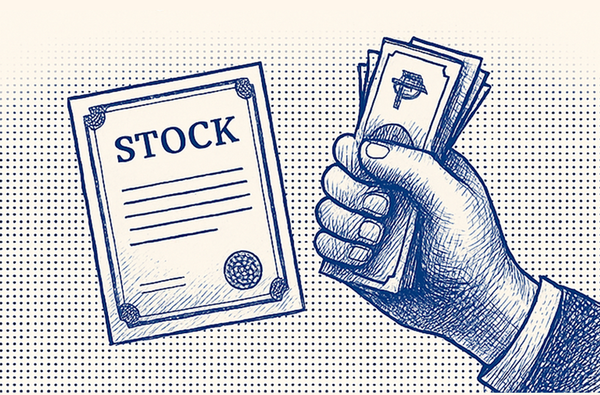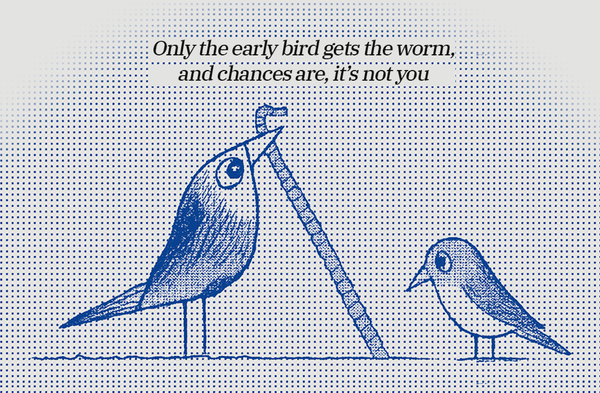How fast can your money double? Learn the Rule of 72
Here’s a riddle that checks how well you understand the mathematics of growth. Let’s say we have a pond with a single lily pad. It’s a special lily pad that grows very fast, doubling in size every day. It’s expected that on the 30th day, the pond will be fully covered by this lily pad.
Here’s the question: Given what we know about the pond and the lily pad, on which day was half of the pond’s space taken up by the lily pad? Try coming up with your own answer first before reading on!
It’s tempting to answer day 15. After all, if we’re solving for when the pond is halfway filled, then the halfway point of our 30-day time horizon feels intuitive. But the correct answer is actually day 29! If our lily pad doubles in size every day, that means if our voracious lily pad covers half the pond on day 29, it will cover the whole pond on day 30, since a doubled half makes a whole!
This riddle illustrates the importance of understanding compounding growth. Compounding is when an object’s growth relies on its size in the previous time period. Investing works this way: a 10 percent growth applied to ₱10 is just ₱1, but apply that 10 percent growth to a billion pesos, and your wealth grows by ₱100 million. When it comes to investing, the amount of capital you start with matters.
Compounding isn't intuitive for most people because we naturally think in terms of linear growth, where growth is just constant over time. It’s like stashing a thousand pesos of your salary every month under your mattress. After a year, you end up with a growth of twelve thousand pesos, regardless of how much money you started with. It’s straightforward, intuitive, and linear, but ultimately, not very useful in the context of investments.
Investing relies on compounding, not linear growth. Most people already know that stocks and bank accounts grow in percentages, but assets that give you cash flow can multiply as well through reinvestment. When you take the interest and rent payments from your bonds and real estate and buy more bonds and real estate, your portfolio grows in size, making your next cash flow payouts bigger. All investments have the potential for compounding growth.
As you can see, compounding is terribly important for investments. However, as our lily pad riddle shows, the math can be unintuitive. Even if you got the answer correct, chances are you had to override your natural linear instincts to solve for the correct answer, and that’s just a simple question solving for one time period. What if you need to know how much a stock portfolio will grow after sixteen years? That’s quite hard to solve without a calculator!
Fortunately, there’s a quick mental calculation we can perform called the Rule of 72. Here’s how it works: To estimate how long it takes for your investment to double, just divide 72 by the growth rate of your investment.
Let's take a practical example. Historically, stocks have returned roughly eight percent to 10 percent annually over the long run. Suppose you invest PHP 100 at an average annual return of 9%. How long will it take for that money to double?
Using the Rule of 72, you'd divide 72 by nine, resulting in eight. This means that your PHP 100 investment would double to PHP 200 in approximately eight years if it compounds at a 9% annual rate. If you pull out a calculator, you’ll find that a 9% annual growth over eight years yields a total growth of 99.26% – more than reliable enough for quick estimates.
Thanks to the Rule of 72, we can easily estimate that a 9% investment doubles every 8 years. With this knowledge, we can roughly project future compounding growth. Your PHP 100 investment will be worth around PHP 200 in year eight, around PHP 400 in year sixteen, around PHP 800 in year twenty-four, and so on.
While the exact growth rates may differ based on the specific financial products, the Rule of 72 remains universally applicable. Whether you're assessing stocks, bonds, or bank accounts, using the Rule of 72 on your expected rate of return gives you a quick, practical sense of how your money might grow over time.
Compounding is essential to building wealth through investments. Although the math can be unintuitive, as the lily pad riddle has shown, the Rule of 72 can simplify this complexity, offering an easy-to-use shortcut for calculating your investment growth over time.
Incorporate the Rule of 72 into your financial planning toolkit. It provides quick and reliable estimates, empowering you to make smarter investment decisions and better manage your financial future.



